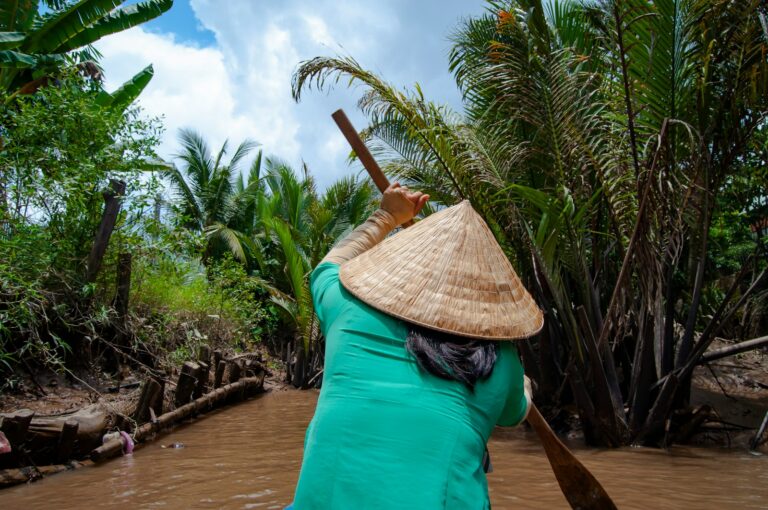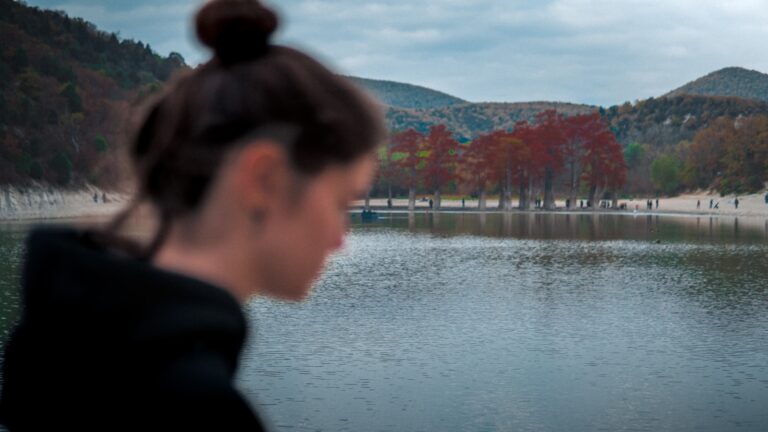Siem Reap isn’t just about ancient temples
The city of Siem Reap has lively streets lit up at night, drawing visitors for late-night eats, fun, and shopping.
After checking into a hotel on Sivutha Street and freshening up, we headed out with the tourist crowds towards Pub Street, just 300 meters away, as dinnertime approached. Pub Street sits in the heart of Siem Reap, near the market and river, packed with buildings and buzzing at night.
Pub Street feels similar to Pham Ngu Lao’s backpacker area in Ho Chi Minh City, but with more shops and noise. After 7 PM, it becomes pedestrian-only, with restaurant and cafe tables spilling onto the sidewalks. You’ll feel like you’re in the West, surrounded by fair-haired, blue-eyed tourists.
The food, however, is distinctly Southeast Asian: Khmer, Thai, Indian, Chinese, Japanese, Vietnamese, Malaysian dishes… plus Western options like French, Italian, and American for homesick travelers. The local drink is Angkor beer, slightly similar to Saigon Red. Prices are reasonable: dishes start around $4 USD, up to $10; Coke is $2 a can; Angkor beer is $3 for a large bottle, $2 small.
US dollars are the main currency for tourists in Cambodia (not just Siem Reap), though Euros, Thai Baht, and Vietnamese Dong are also accepted. Money is money here.
After exploring Pub Street, my wife and I ate at “Khmer Family Restaurant.” I’d dined there on my second trip in 2009, trying the traditional Cambodian dish Amok, and we ordered it again. Amok is white rice topped with a thick yellow curry-like sauce made with shrimp, chicken, fish, or meat, plus egg yolk, coconut milk, palm sugar, turmeric, onion, peanuts, bell pepper, and kale. Served in a small bamboo basket lined with banana leaf and a separate bowl of sauce, it resembles Indian curry but is milder. Just don’t overeat – it’s rich!
Budget travelers can eat at the street stalls lining Pub Street. Crowded with foreigners, these outdoor spots aren’t fancy or as comfy as restaurants, but the food is likely similar. Hotpot is popular here: a $4-$5 pot serves 2-3 people with shrimp, squid, fish, and tiny beef pieces, plus rice, noodles, or kuay teow noodles. The pot has a grill on top and broth below. Coke is cheaper here at $0.75.
After dinner, visitors often hit the cafes scattered around Pub Street. For livelier vibes, the bars are essential. The Red Piano (though no red piano was seen!) stands prominently at the street’s entrance, always busy thanks to its prime location and fame from Angelina Jolie, who drank cocktails here while filming *Tomb Raider* at Angkor in 2000. They even created a “Tomb Raider” cocktail (Cointreau, tonic, lime) to capitalize on it. Prices are reasonable: draft beer $1, black coffee $1, tea $1; cocktails start at $3.
Seeing Apsara dance is a must in Siem Reap or Phnom Penh. Formal shows cost around $20, but cheaper options exist: some Pub Street bars like Temple Club offer free performances if you buy drinks. There, dark-skinned dancers move sensually to traditional music under yellow lights, evoking the timeless Apsara statues of nearby Angkor.
Some visitors try “Dr. Fish” massage on Pub Street – dipping feet into tanks of small fish (like tilapia, not the Turkish spa kind). The sign promises: “If our fish can’t make you happy, we’ll not charge.” (Note: This is reportedly banned in the US). On Pub Street, it’s $3 for 15 minutes; just across the road in the less crowded night market, it drops to $2 – the same price as a regular foot massage (more common in the night market).
Shopping: Bargain Hard!
The Angkor Night Market opens at 4 PM. Some shops sell gold, silver, and gems like rubies/sapphires (often mined in Pailin, Cambodia or Chanthaburi, Thailand), but experts advise against buying due to risk of fakes – better to buy guaranteed gems back home.
Other goods fall into three categories: clothes, scarves, and souvenirs (Buddha statues, Bayon faces, Apsara figures in stone/wood/brass, leather puppets). Clothes and scarves attract women most. Clothes are mainly Thai imports but *cheaper* than in Thailand. My wife bargained hard for a dress and got it for $4 (~84,000 VND), while a similar one in Bangkok months earlier cost 200 Baht (~140,000 VND).
Scarves are likely Cambodian-made – the traditional *Krama*. Used by Khmer people in Southern Vietnam too, these checkered scarves typically have black-white or brown-white squares. Kramas are incredibly versatile: head cover, scarf, sweat towel, belt, skirt, or even men’s loincloth! Market kramas (80cm x 180cm) come in more colors for tourists. They’re top sellers due to price: basic ones ~$1, premium up to $10 (before haggling!).
**Crucial Tip:** Prices aren’t marked in the night market, and they vary wildly between stalls for the same item. **Always bargain hard – much harder than in Ben Thanh Market (HCMC)!** Start by offering half or two-thirds of their initial price. Haggle freely. Stall owners here stay friendly – I’ve never seen one scowl in three visits. If you walk away, they’ll often call you back: “I give you discount! How much you pay?”
Most Siem Reap vendors speak decent tourist English (unlike Phnom Penh); some even know basic Vietnamese. Besides the night market, the famous Old Market (Psar Chaa) near Pub Street is open daytime (some souvenir stalls open at night too). **Bargain aggressively here too.** As a Vietnamese girl living there told us: “They sell to Cambodians for half the price they ask foreigners.”

Always negotiate politely with a smile, start around 30-40% below the asking price, and be prepared to walk away if the price isn’t right, but avoid haggling in fixed-price stores or restaurants.



